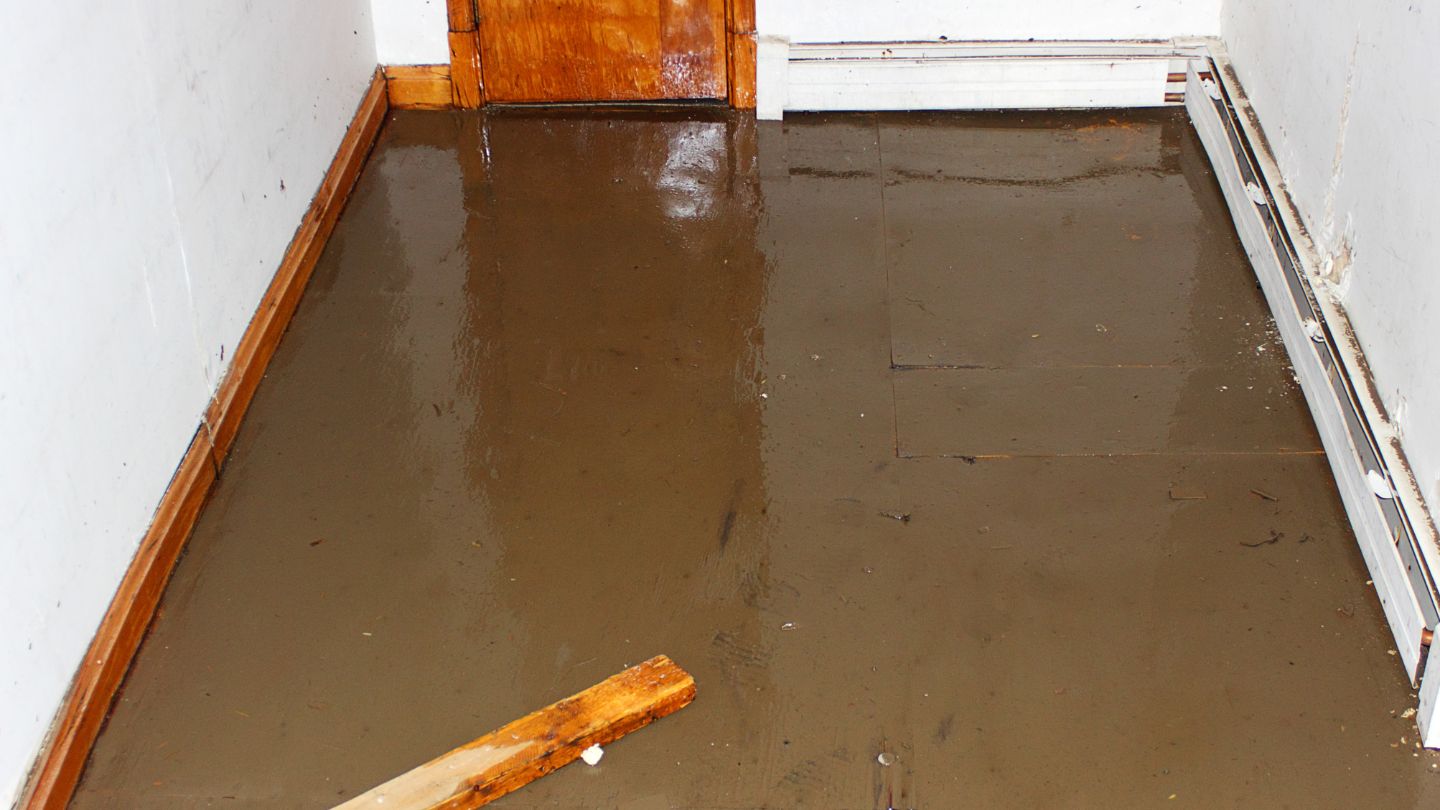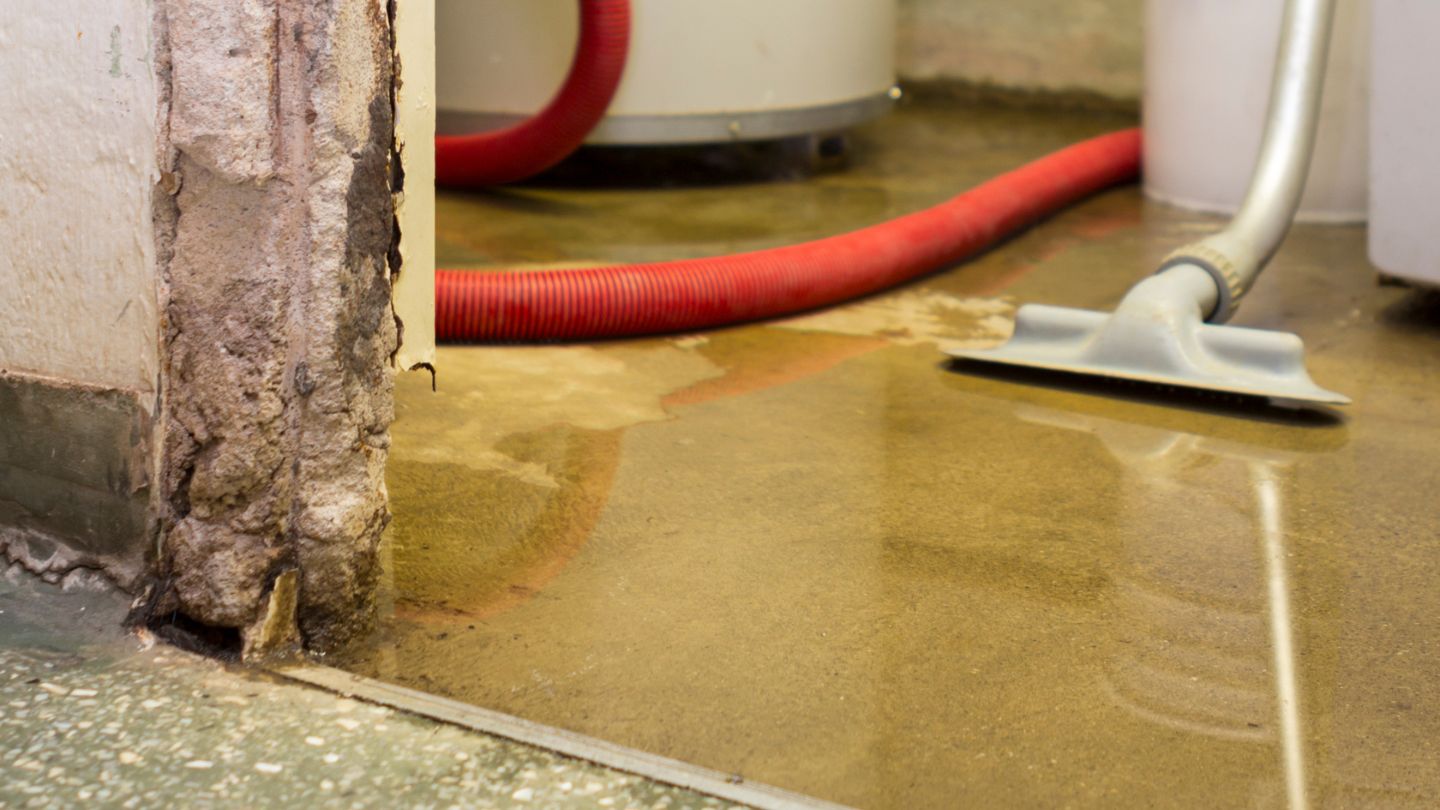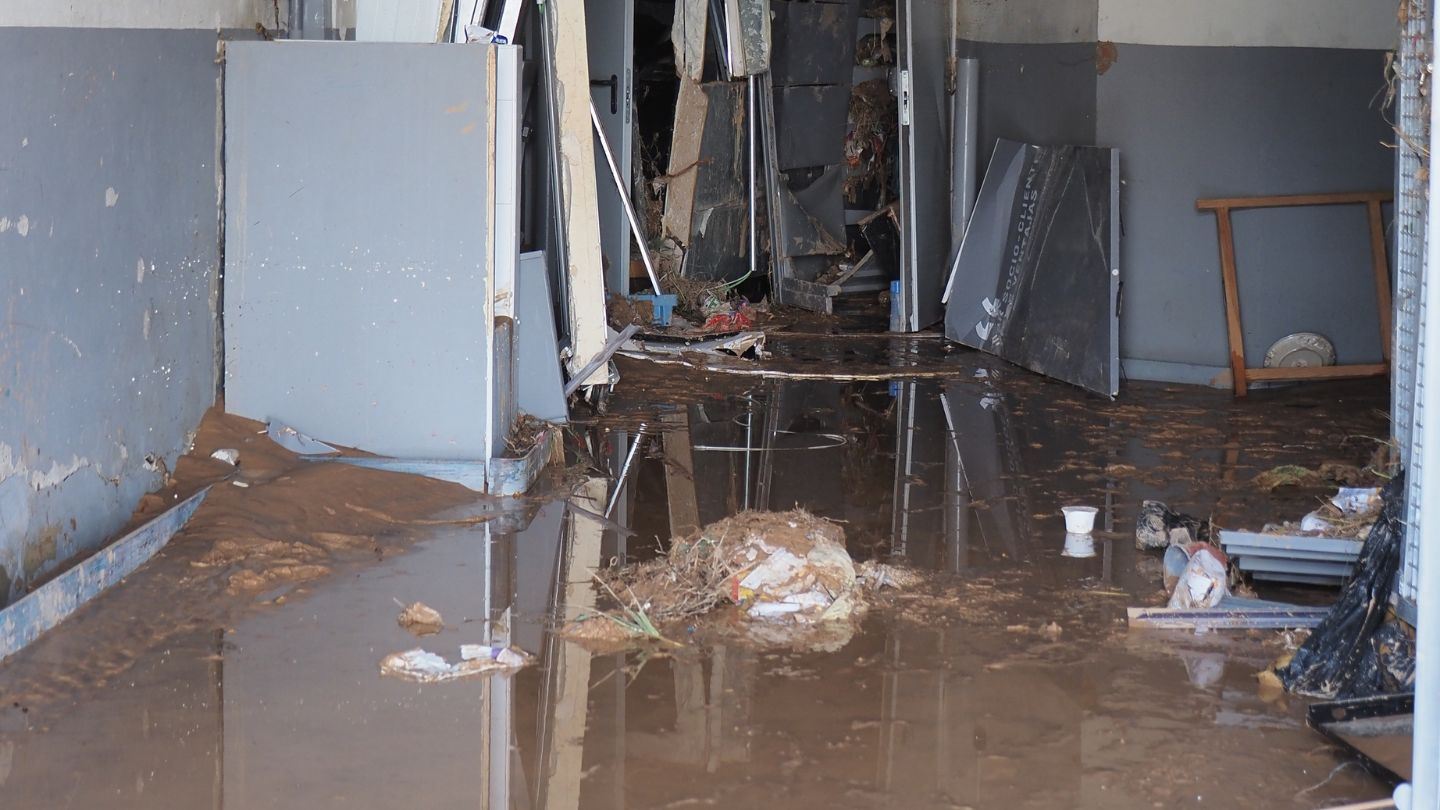Dealing with water damage in commercial properties can be overwhelming. This blog on understanding commercial water damage causes and professional solutions will help you identify the typical sources of water damage and the professional methods used to fix them. By knowing these causes and solutions, you can better protect your property and ensure a faster recovery in case of water damage.
Key Takeaways
- Common causes of commercial water damage include burst pipes, appliance malfunctions, and severe weather, making regular maintenance essential for prevention.
- Immediate response to water damage is critical, involving steps like stopping the water source, documenting damages for insurance, and contacting a professional restoration service.
- Professional assessments and restoration techniques, including advanced water removal and mold remediation, are vital to ensure thorough recovery and prevent long-term issues.
Common Causes of Commercial Water Damage
Properties used for commercial purposes face a range of factors that can cause water damage, which leads to substantial interruptions in operations and expensive repair work. Frequently, the issue stems from pipes bursting due to various reasons such as extreme cold weather, deterioration over time, or insufficient maintenance. These incidents, along with faulty appliances like HVAC systems and water heaters, often result in unnoticed water damage until it has caused serious structural damage.
Intense rainfall and extreme climatic conditions can exceed the capacity of drainage systems, resulting in an overflow of stormwater runoff and subsequent flood destruction. Damage caused by storms or aging structures can create roof leaks, permitting moisture ingress into premises that, if not swiftly resolved, encourages mold proliferation as well as compounding structural degradation. Long-standing minor leaks originating from plumbing installations or piping may accumulate considerable leakage, only becoming apparent once significant impairment occurs.
Awareness of these potential problems permits those who own property to implement measures aimed at protecting their financial outlay. Diligent upkeep, along with immediate rectification upon detecting leaks, combined with close inspection of machinery, plays an essential role in lessening potential damages stemming from water-related issues (events that are commonly experienced by proprietors), thus ensuring the preservation of their commercial assets.
Immediate Steps to Take After Water Damage
In the event of water damage, a swift reaction is imperative to mitigate additional destruction and initiate the restoration process. The first priority is to eliminate the water source, whether that involves shutting off the main supply line or repairing a burst pipe. For safety, it’s essential to avoid entering water-damaged areas until they have been assessed by professionals equipped with the proper protective gear and tools.
Accurate documentation of the damage is critical for insurance purposes. Professionals will thoroughly photograph structural impact and contents to ensure detailed records are submitted with your claim. Delays in response can result in mold growth within 24–48 hours, compounding the damage and complicating the restoration process.
Engaging a certified restoration team immediately after discovery ensures the use of specialized equipment for water extraction, containment, and sanitation. Their expertise in identifying hidden moisture and preventing mold development plays a vital role in reducing long-term risks and minimizing costly repairs. Early intervention is the key to successful water damage recovery.
Professional Water Damage Assessment
It’s imperative to have a detailed professional evaluation to grasp the full scope of water damage and devise an appropriate strategy for the restoration process. The inspection begins by pinpointing the origin of water penetration, which could be evident leaks, floods, or concealed problems. To detect unseen moisture in walls, ceilings, and floors that might otherwise go unnoticed, professionals employ sophisticated devices such as infrared cameras and moisture detectors.
During this assessment phase, specialists scrutinize the building’s structural integrity while measuring humidity levels within various construction materials. A thorough inspection like this aids in identifying necessary restoration services and halting deterioration. They then compile comprehensive reports detailing their observations along with repair suggestions—these are crucial both for executing a successful restoration plan and supporting insurance claims.
Professional evaluations guarantee that all regions impacted by water damage are accurately identified and remediated. This initial step is vital for laying down a solid foundation for an efficient water damage restoration journey, aiming at preventing subsequent complications while ensuring complete rehabilitation of affected areas.
Advanced Water Removal Techniques

Removing excess water efficiently is vital in the process of restoring properties after water damage. Specialists deploy various high-tech methods and tools to draw out moisture from areas that have been affected. Tools such as powerful pumps that can be submerged and units mounted on trucks are indispensable for rapidly eliminating large volumes of water. To accelerate the drying phase, professional-grade air movers are utilized to boost airflow and disperse damp air.
The combination of heat and increased airflow markedly speeds up the drying timeframe. Dehumidifiers work by extracting humidity from the atmosphere, which enhances drying effectiveness while averting persistent harm caused by moisture. In compact spaces where ventilation may be limited, desiccants serve a critical role in absorbing airborne moisture, guaranteeing comprehensive dryness.
Implementing these sophisticated techniques for removing water is crucial for lessening damages inflicted by water incidents and preventing secondary complications like mold infestations. The use of specialized apparatuses coupled with professional knowledge enables restoration teams to proficiently restore commercial buildings back to their original condition through meticulous cleaning and drying processes.
Drying and Dehumidification Process
During the restoration process, effective moisture management through drying and dehumidification is essential to prevent mold growth and halt material degradation. Professionals begin by deploying industrial-grade dehumidifiers to stabilize humidity levels in the affected area. These machines operate continuously to extract excess moisture from the environment and materials, mitigating long-term damage.
Alongside dehumidifiers, high-powered air movers are strategically placed to maximize airflow across walls, ceilings, and floors. These fans enhance evaporation and accelerate the drying timeline. In particularly confined areas, equipment such as negative air machines and air scrubbers may be used to control airflow and eliminate airborne particles.
To ensure precision, restoration teams utilize moisture meters and hygrometers to monitor drying progress and confirm when materials reach safe moisture thresholds. This proactive, equipment-driven approach prevents residual dampness from triggering future structural or microbial issues. Complete moisture removal is a critical step in stabilizing indoor environments after water damage.
Mold Remediation and Prevention
Following water damage, mold presents a serious risk to both health and property. It can develop within 24–48 hours and spread rapidly without proper intervention. Mold growth may lead to respiratory discomfort, skin irritation, and other allergic reactions, particularly for individuals with sensitivity to airborne contaminants.
Trained mold remediation professionals conduct in-depth assessments using specialized equipment to locate both visible and hidden mold. They use certified biocides and EPA-approved disinfectants to eliminate active mold colonies and sanitize affected surfaces. The goal is complete eradication and prevention of future regrowth through moisture control and containment.
Restoration experts may remove porous materials like carpet padding or insulation if contaminated, while salvaging valuable items using industry-approved decontamination methods. Long-term mold prevention involves improving ventilation, managing humidity with dehumidifiers, and routinely inspecting high-risk zones such as basements or mechanical rooms. Professional remediation ensures health and safety by delivering comprehensive cleaning, containment, and preventive strategies.
Structural Repairs and Reconstruction

The extent of repairs after water damage varies based on the level and duration of exposure. Delayed response can lead to serious deterioration of structural materials, compromising safety and requiring more intensive remediation. Restoration teams address damage by removing unsalvageable materials like saturated drywall, swollen baseboards, or deteriorated flooring components to halt further deterioration and ensure a sanitary environment.
While restoration may involve replacing essential materials such as drywall sections, baseboards, or underlayment, the focus remains on returning the space to a safe, functional condition. Restoration professionals utilize industrial tools and processes to stabilize compromised areas, dry affected structural elements, and implement targeted reconstruction where needed.
Prompt attention to structural repairs safeguards against mold development, moisture entrapment, and hidden damage that could lead to larger failures down the line. Professional crews follow strict safety protocols and building standards to ensure the restored space meets structural integrity and environmental health benchmarks.
Working with Insurance Companies
Managing insurance claims after water damage can be challenging, but restoration professionals provide essential support to streamline the process. Before beginning any repair work, technicians thoroughly document damage—including photographs and detailed notes—to support your claim and establish a scope of work aligned with coverage limitations.
Professionals understand how to navigate insurance requirements and help clarify what is and isn’t covered under typical policies. Not all water damage—such as from gradual leaks or external flooding—is included in standard coverage, making it vital to understand exclusions. Restoration experts assist by providing itemized estimates and coordinating directly with adjusters to validate the scope of work needed.
Rather than homeowners managing multiple contractor bids or engaging in complex negotiations, restoration companies simplify the claims process and advocate for accurate compensation. In cases involving high-value loss or replacement disputes, professionals help ensure documentation supports the full cost of remediation and materials. Their experience helps minimize stress, reduce delays, and avoid potential claim denials due to incomplete records or procedural missteps.
Benefits of Professional Water Damage Restoration
Engaging with professional water damage restoration services delivers several advantages, ensuring comfort and reassurance throughout the demanding process of recovery. Restoration specialists can boost both the value and visual charm of a property for prospective purchasers by using sophisticated equipment such as potent pumps and devices that detect moisture to achieve efficient drying and complete restoration.
Employing experts guarantees an all-encompassing and successful approach to remediation, tackling every aspect of water damage from the first extraction of water to the concluding repairs. Opting for professional help is key in preventing mold growth, averting structural harm, and circumventing other enduring problems, thereby safeguarding both safety and durability within buildings.
Summary
Understanding the causes and professional restoration steps for commercial water damage is crucial for minimizing disruptions and safeguarding assets. Recognizing common sources, acting swiftly after incidents, relying on expert assessments, employing advanced extraction and drying techniques, and addressing mold and structural issues are all vital components in ensuring comprehensive recovery and mitigating future risks.
At 911 Floods R Us, our expertise in commercial water damage restoration in Buford ensures a thorough, compliant, and safe restoration process. We provide comprehensive solutions to restore your property and peace of mind, managing every step from emergency response to cleanup and coordination with insurance providers to quickly return your commercial space to normal. Contact us today to secure your property against water damage.
Frequently Asked Questions
What are the long-term risks of untreated commercial water damage?
Untreated water damage can lead to mold growth, structural weakening, electrical hazards, and increased repair costs over time.
How soon should water extraction begin after discovering damage?
Ideally, extraction should begin within the first 24 hours to reduce moisture buildup and prevent mold or structural issues.
Can commercial water damage affect indoor air quality?
Yes, trapped moisture can foster mold and mildew, releasing spores that compromise indoor air quality and occupant health.

